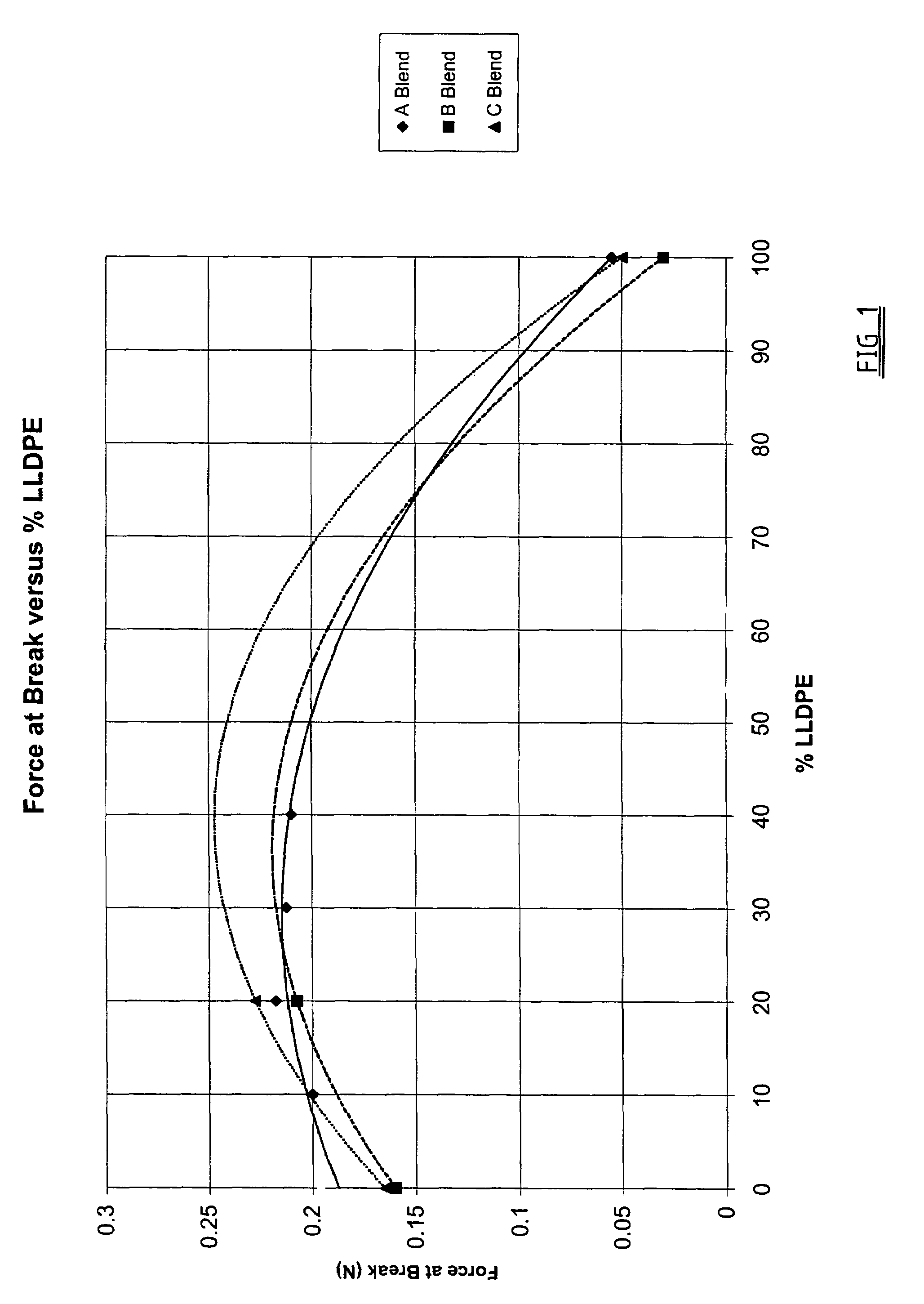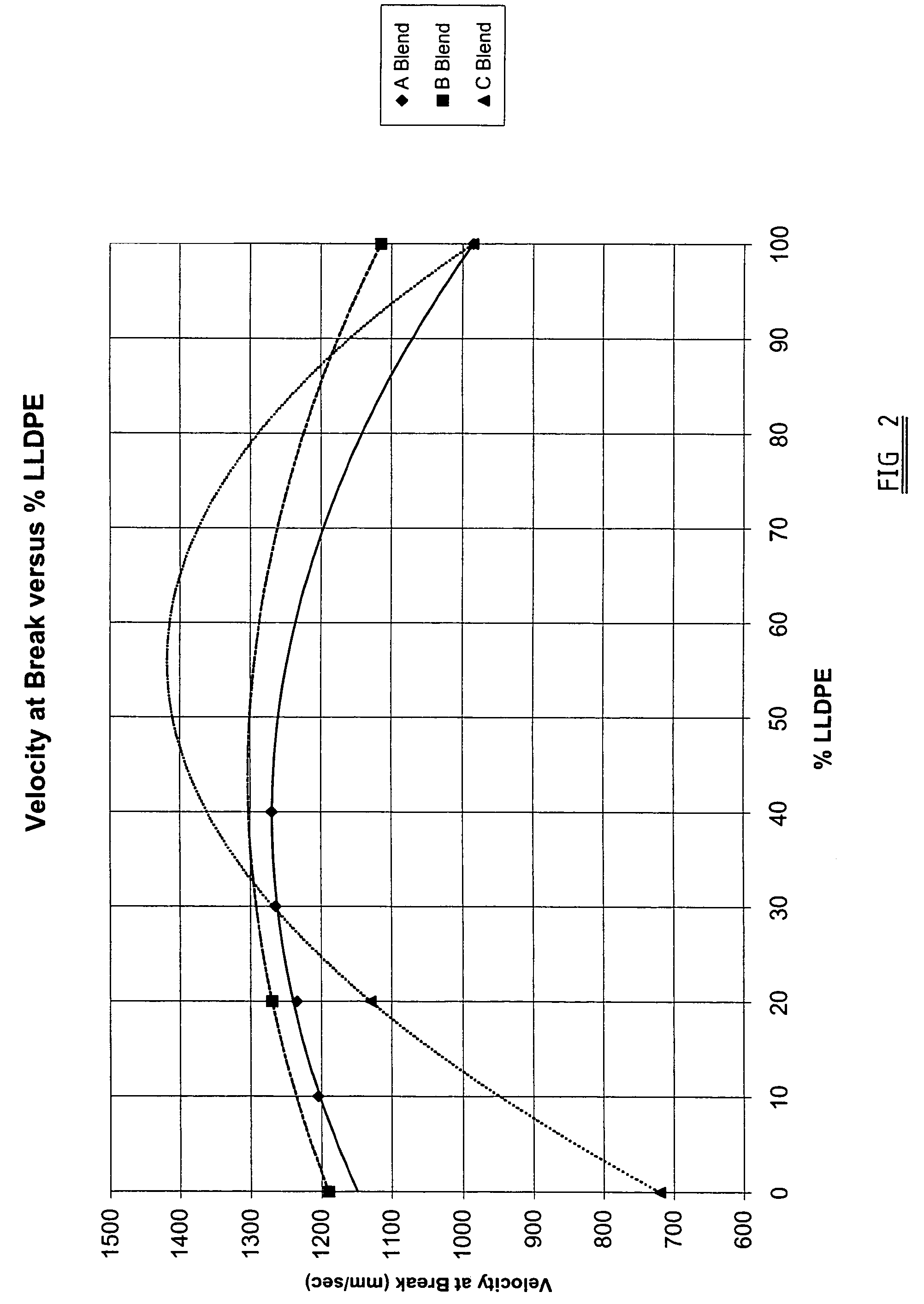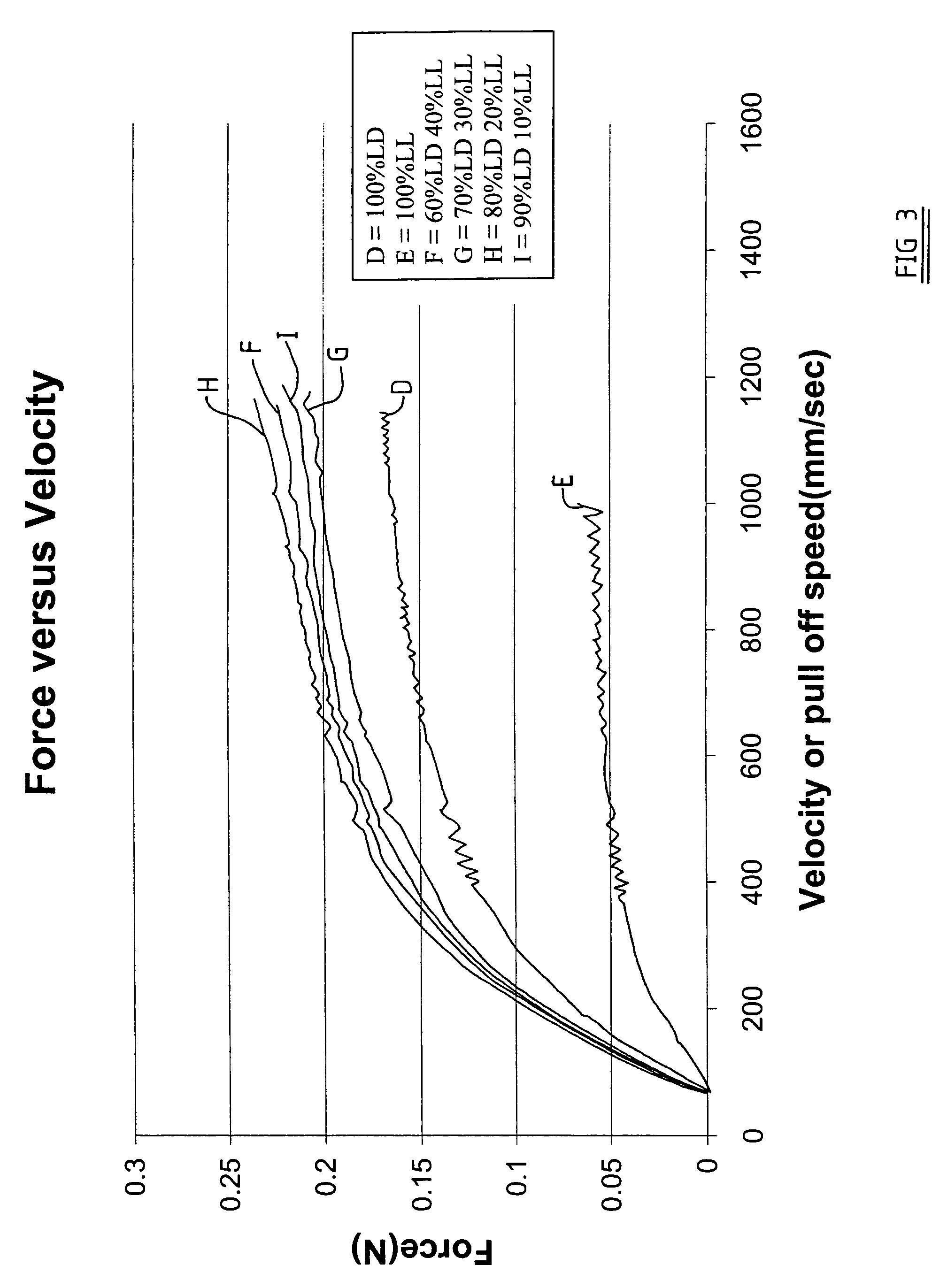Polyolefin foams and methods of making the same
a polyolefin foam and polyolefin technology, applied in the field of polyolefin foams, to achieve the effect of increasing the toughness and elasticity of the foam and ensuring the safety of the foam
- Summary
- Abstract
- Description
- Claims
- Application Information
AI Technical Summary
Benefits of technology
Problems solved by technology
Method used
Image
Examples
example 1
[0067]
TABLE 1FoamThick-RunLDPEdensitynessFoamMeltNo.wt %LLDPEkg / m3mmqualitytemp. ° C.1100021.11.0good96–972752521.41.1good973653521.21.1good97percentages of LDPE and LLDPE are expressed as weight percentages of the total polyolefin blendLDPE with a MFI of 2.0 g / 10 min and a density of 924 kg / m3LLDPE with a MFI of 2.8 g / 10 min and a density of 919 kg / m3blowing agent was isobutane
[0068]For the first set of these experiments a 120 mm single-screw extruder was used to manufacture a foam sheet. The first one run was used as a control run, using 100% LDPE.
[0069]In the second and third runs of Table 1, with 25% and 35% LLDPE respectively, the foam quality and density obtained were comparable to that of the foam obtained using 100% LDPE, although it was necessary to adjust the process conditions to control the melt temperature.
example 2
[0070]
TABLE 2Foamthick-RunLDPELLDPEdensitynessFoamMelt.No.wt %wt %kg / m3mmqualityTemp. ° C.1100024.20.8good111290.59.524.90.8good112387.112.924.50.8good112483.816.224.30.8good112580.519.524.10.8good112674.825.224.10.8good112percentages of LDPE and LLDPE are expressed as weight percentages of the total polyolefin blendLDPE with a MFI of 2.0 g / 10 min and a density of 924 kg / m3LLDPE with a MFI of 2.8 g / 10 min and a density of 918 kg / m3blowing agent was an iso- / n-butane mixture
[0071]Table 2 shows the results obtained from an experiment with twin-screw extruders. The twin-screw extruder was 150 mm in diameter and was used for producing a 0.8 mm sheet of foam from a blend of LDPE and LLDPE. The blowing agent used was an iso- / n-butane mixture.
[0072]Again, the first run was used as a control run using 100% LDPE. In runs 2 through 6, the amount of LDPE was steadily reduced and the amount of LLDPE was steadily increased. Table 2 shows that foam density actually decreased for 19.5% and 25.2% LL...
example 3
[0073]
TABLE 3Foamthick-RunLDPELLDPEdensitynessFoamMelt.No.Wt %Wt %kg / m3mmqualityTemp. ° C.1100022.70.8good108295522.90.8good1093851522.70.8slight111–112collapse4802022.90.8slight111–112collapse5752522.90.8slight111–112collapse6703022.70.8good109–110percentages of LDPE and LLDPE are expressed as weight percentages of the total polyolefin blendLDPE with a MFI of 2.0 g / 10 min and a density of 924 kg / m3LLDPE; has a MFI of 2.8 g / 10 min and a density of 919 kg / m3blowing agent was isobutane
[0074]In this experiment, a 150 mm twin-screw extruder was used for producing a 0.8 mm sheet of foam from an LDPE and LLDPE blend. Run 1 of Table 1 was used as a control run with 100% LDPE. Runs 2 to 6 show the effects of steadily increasing the percentage of LLDPE. When the LLDPE was increased to 15% (run 3) through to 25% (run 5) the melt temperature became higher and foam quality degraded. Before run 6, changes in process conditions were made that brought the melt temperature down and consequently the...
PUM
| Property | Measurement | Unit |
|---|---|---|
| Fraction | aaaaa | aaaaa |
| Fraction | aaaaa | aaaaa |
| Fraction | aaaaa | aaaaa |
Abstract
Description
Claims
Application Information
 Login to View More
Login to View More - R&D
- Intellectual Property
- Life Sciences
- Materials
- Tech Scout
- Unparalleled Data Quality
- Higher Quality Content
- 60% Fewer Hallucinations
Browse by: Latest US Patents, China's latest patents, Technical Efficacy Thesaurus, Application Domain, Technology Topic, Popular Technical Reports.
© 2025 PatSnap. All rights reserved.Legal|Privacy policy|Modern Slavery Act Transparency Statement|Sitemap|About US| Contact US: help@patsnap.com



